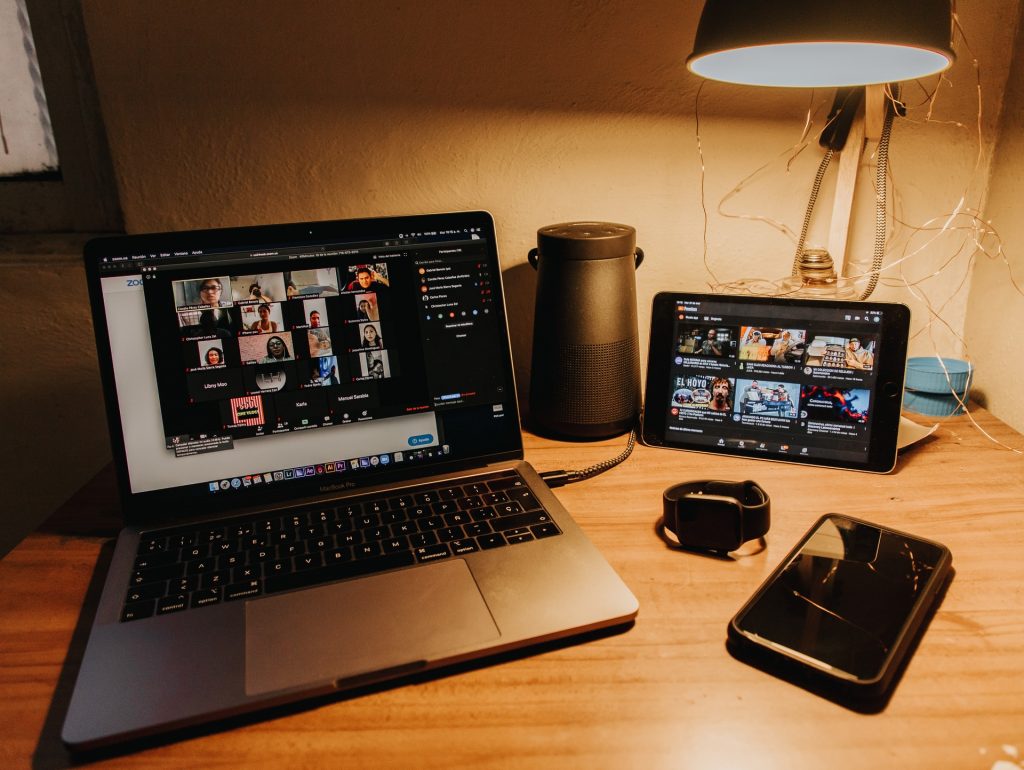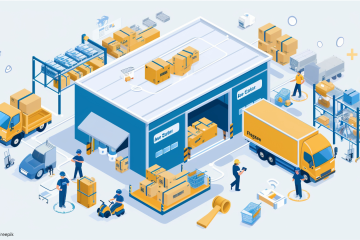As individuals begin to find their footing in a world fraught with uncertainty, B2B businesses are also in the process of adjusting to this new normal that we have been forced to acquaint ourselves with. Across Zoom calls and socially-distanced Friday team huddles, questions abound: How do we stay in business? How do we continue to serve? How do we recover?
Supply-chain disruptions, the possibility of a new global recession, changes in demand and the forced closure of businesses; the impact of Covid-19 has not been a subtle one. But rather than take this as a blow to the head, companies are adjusting to the currents and leveraging on new strategies that are made possible due to emerging technological trends that have been brought to the forefront.
This article aims to understand how the recent wave of events has affected B2B enterprises and the steps that are being taken to adapt and evolve with the changing tides.
The Effects of Covid-19 on Different B2B Industries
While the effects of Covid-19 have been unsparing, the degree of its impact differs across industries within the B2B sphere. Drawing data from a recent survey conducted by B2B International, the industry to be hit the hardest is unsurprisingly Tourism and Hospitality who have cited a 66% disruption to their business.
Other segments who have experienced substantial disturbance to their business include Personal Services (60%), Education (52%), Wholesale (46%) and Manufacturing (46%). On the flipside, the B2B sectors who have experienced minimal impact are Tech and Telecommunications (21%), Financial Services (28%) and Energy and Utilities (29%).
For B2B industry fixtures such as wholesale and manufacturing, some of the factors that have caused the most strain on businesses include shifts in customer demand patterns that complicate inventory and procurement strategies, employee layoffs and supply chain disruptions due to border closures and the restriction on transportation.
As companies assess the best way to address these drastic changes, let us also look into how Covid-19 has altered the way in which businesses transact and communicate with each other.
How has B2B Sales Changed Amidst the Pandemic?
According to a report by Mckinsey, an emerging trend in B2B sales is the shift towards remote and digital. This has the potential to become more than just a temporary fix as companies begin to see the benefits of buying and selling from one another in a digital space.
So what has changed? For starters, customer preference for digital over traditional interactions has doubled during the pandemic and there is a 30% increase in using mobile apps to make orders and other transactions. The report also shares that the likelihood for companies who provide stellar digital experiences being chosen as a primary supplier has doubled.
And what about sellers? The report states that 65% of B2B decision-makers have declared that the remote model is equivalent to or more effective than the traditional route. Additionally, 96% of B2B sales teams have entirely or partially adopted remote selling as part of their sales strategy.
Based on all of the above, how does one go about predicting the sales model of a post-pandemic world? What can be said is that many previously forecasted B2B trends such as omnichannel selling and e-commerce are resurfacing at an accelerated rate and with 79% of B2B companies stating that they are more than likely to continue to observe these changes post-Covid, it is clear that the new direction is digital.

B2B Marketing: Digital is the New Normal
As businesses adapt to the changes, they are beginning to find firmer allies in digital channels such as virtual events and social media as a means of staying connected with one another and with their customers. The digitisation of multiple business efforts is most visible in how B2B players have started to supplement traditional marketing efforts with digital strategies.
Even before the Coronavirus hit, research has shown that B2B marketers who participated in the digital revolution have recorded 8% more shareholder returns and annual revenue growth rate that is five times more than their counterparts.
And with an increasing number of people turning to online channels, companies are now leveraging on technology more than ever in an effort to stay relevant.
From shared marketplaces that allow businesses to sell their wares online, reach new prospects and educate their customers, a notable factor behind the conversion is the recognition of how the digital space has the potential to open up new, untapped opportunities that extend beyond one’s physical limitations.
Another point of note is efficiency. Digitisation means that companies can now automate some of their most tedious back-end processes such as bookkeeping, inventory management and payroll processing. Not only will this reduce costs and save on resources but it also helps to streamline workflow and reduce human errors.
As customers do more research on products online and have greater access to information sources, having a rich and up-to-date store of content for prospects to engage with is extremely important. This can range from online product reviews on your e-commerce website to downloadable educational resources that will allow you to “speak” to your audience more clearly and consistently.
What Businesses Can Do to Keep Up
Businesses hoping to survive amidst our changed landscape must start making new plans that will see them through and beyond these challenges. With the deployment of digitised efforts being at the forefront, do remember to ensure that the e-commerce channels you are using to reach your customers are optimised and well integrated with one another. You want to be able to provide your buyers with a navigation that is efficient, convenient and user-friendly.
In a time where it is of utmost importance for organisations to be able to reach their customers both new and old, another technological trend to start leveraging on is Conversational Commerce. Before diving into that however, let us understand what the term means.
Coined in 2015 by Chris Messina – an American tech evangelist and former Uber Developer Experience Lead who is perhaps best known as the inventor of the hashtag – Conversational Commerce refers to the integration of messaging apps and customer experience in e-commerce. It is the process of businesses interacting with customers via social media, chat apps, chatbots and even smart voice devices.
Because it is uniquely positioned to help simplify communication between businesses and their customers, it is designed to ensure that buyers are able to experience the most efficient path to fulfilling their needs; be it order fulfillment or product knowledge.
Ultimately, there is more to this than simply implementing new technology and one of the core steps that businesses can take is to remember to humanise their interactions with prospects new and old. Connecting with them over virtual chat is important, but also, remember to pay attention to what is happening around them and how it is affecting them. All companies are affected a little differently and knowing how it is affecting your customer is knowing how you can provide them with value.

What are the B2B trends moving forward into a post-Covid world?
As we draw closer towards the end of 2020, we are already looking for cues that will tell us what from our current situation will continue to change and endure in the time to come. How will these trends re-shape the market that we operate in? We share four trends that we foresee becoming part of the new normal in the B2B arena.
Accelerated Information Search. Due to increased numbers of online interactions and access to information, B2B customers have become more proficient and comfortable with using the internet to aid in their knowledge-seeking journey. This means that organisations can anticipate an increase in expectation for on-demand information, resources and content.
Multichannel Selling Strategies. B2B companies that already exist within the e-commerce sphere will continue to seek out and expand their presence to wherever potential customers are. This means going beyond their own website and exploring online B2B marketplaces, looking into social media shopping and more.
Digitised Interactions. An April 2020 study by McKinsey showed that digital sales interactions have doubled since we lived in a pre-Covid world and while this is not information that would cause us to bat an eyelid due to the restriction on travel and the implementation of social distancing, B2B players are also beginning to recognise and take advantage of the additional perks that come with digitally-enabled communication such as reaching leads beyond their geographical coverage and the ease of information sharing.
Adoption of Marketing Automation Tools. As an increasing number of prospects migrate to the digital space, B2B businesses will become more likely to invest their time and dollars in marketing automation solutions. Tools whose key features range from performance marketing to customer insights, lead nurturing and more will be used to help B2B players identify trends in their data and facilitate their online engagement and presence to increase their visibility amongst potential customers.
Moving Forward into the Digital Arena
Amidst of all the uncertainties faced by B2B businesses, there is still light at the end of the tunnel and now is a crucial time for businesses to review their strategy and identify their customer pain points in order to take action and move forward with the changing times. As individuals and industries evolve to adapt, with the right steps, we will come to see transformation born out of adversity.
For businesses across Malaysia, Dropee is an e-commerce solutions provider that seeks to support our local B2B entities by providing them with a platform to help them streamline and manage their customers and inventories with efficiency and ease. We also help to connect businesses with one another via an online marketplace where they can reach out to more people in a fuss-free space.
To learn more about what we do, reach out to us for a free consultation with our team and get a headstart in digitising your business today!




1 Comment
Part 1: How to Digitally Transform Your B2B Business with e-commerce - Dropee · September 30, 2020 at 2:59 am
[…] cannot talk about 2020 without acknowledging how challenging it has been for businesses across the world because of the disruption brought about by Covid-19. For members of the B2B […]